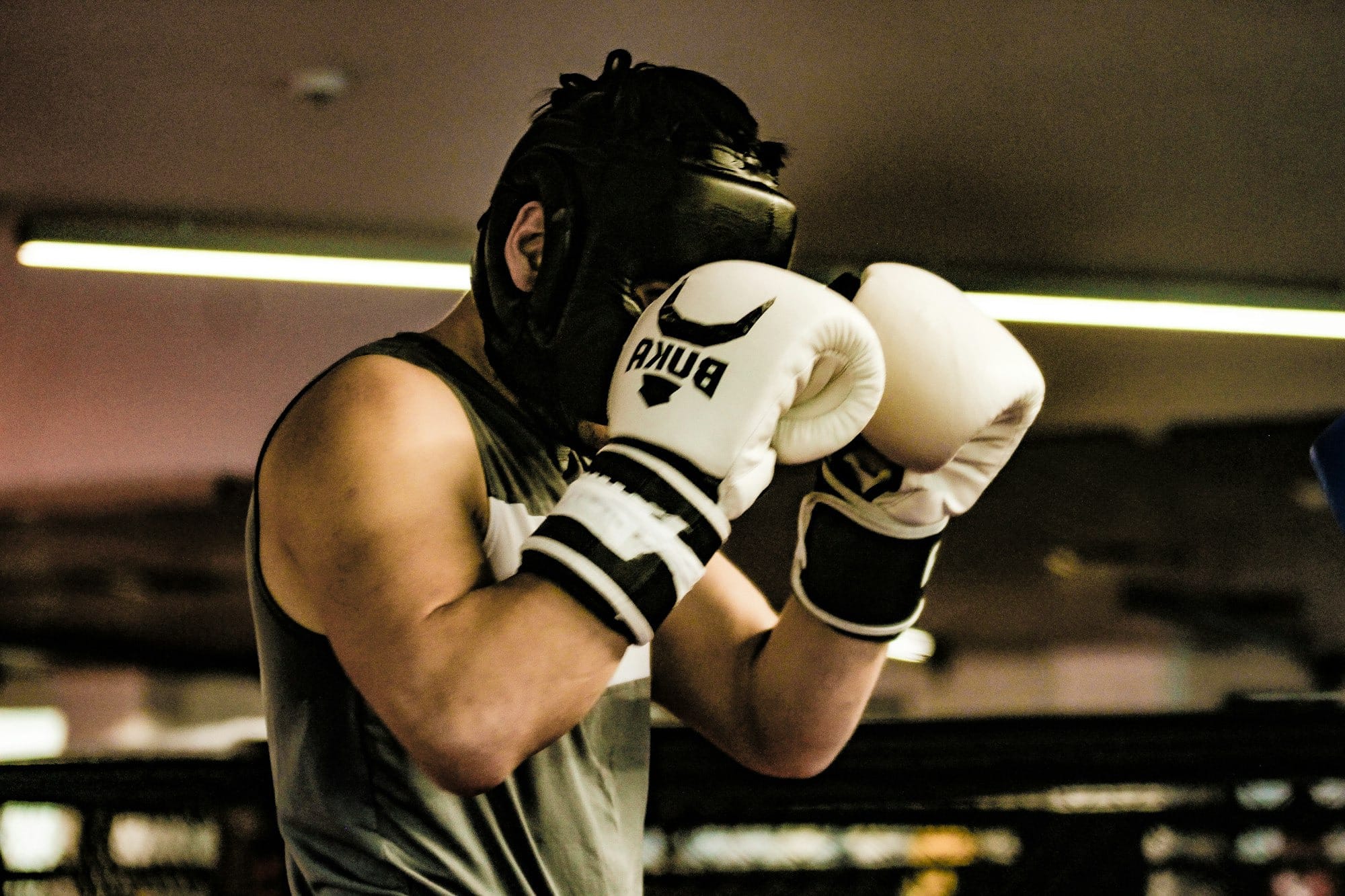Advantages and Disadvantages of the High-Guard in Boxing

What is the High-Guard?
The high-guard is a boxing stance characterized by holding both hands high, protecting the head and upper body.
This guard is commonly used by boxers to shield themselves from an opponent's attacks, particularly punches directed at the head.

Because this guard consist of keeping the hands in a ready position to quickly respond to their opponent's attacks.
This guard is perfect for people who like to execute quick offensive and counter-offensive movements.
What is its purpose?
The primary purpose of the high-guard is to parry and block shots. This boxing guard also makes it easier to throw straights, hooks, and uppercuts.
Add head movement and good footwork in the mix, and this stance becomes a nightmare to deal with.
When to use the High-Guard?
As you can probably already tell, the high-guard shines best in counter-punching.
So the best time to use this guard is either you are under attack or expect to be attacked.
Also as a bonus tip, you can use the high-guard and lean forward to incite an attack (which is usually a jab) if you so wish.
Ways to Use the High-Guard
(Advantages of the High-Guard)
1. Parry Jabs, Straights, and Uppercuts
Parrying is a must-have skill, and it comes naturally with the high-guard.
Yes, blocking these types of punches is the standard approach, but blocked punches can still hurt.
Also, use footwork to adjust distance and mitigate the damage; blocking alone does not reduce damage significantly.
2. Block Hooks
The high-guard can block a range of punches, especially hooks.
When blocking hooks, ensure that your arms are positioned to cover the sides of your head and your elbows are tucked in to protect your body.
Combining this with footwork enhances your defense by allowing you to move out of the punch's path, reducing the impact.
3. Use your elbows to block incoming shots on your abdomen
When I say 'elbow,' I mean your whole arm. Make sure you twist when blocking, just as you would with a straight or jab.
A much safer and practical approach is to simply step back after every punching combination now and then to deny your opponent the opportunity to counterpunch.
Of course, you can also add footwork and body twists while using your elbow to block incoming punches to your abdomen to mitigate damage.
4. Use Footwork for defence
Your footwork should be your primary line of defense. A simple double step-back can shut down most attacks.
As mentioned before, tailor your parries and blocks to complement your footwork; this way you maximize the minimization of the damage received.
Four Main Footwork Techniques for the High-Guard:
- Pivoting
- Side Stepping
- Drop Step
- Split Step
Mastering these four footwork techniques, in my opinion, will make you hard to hit, especially if you add good head movement.
5. Bob and weave
The bob and weave technique involves moving your head side to side (by shifting your weight but you can use your waist or torso to move as well), making it harder for your opponent to land punches.
The key here is not to react to a punch, but to bob and weave regardless of whether a punch is coming or not.
This constant movement keeps your head off the centerline, making you a more elusive target and opening up counter-punching opportunities when your opponent misses.
6. Implement dips
Similar to bobbing and weaving, dipping involves lowering your body to avoid punches, especially hooks aimed at the head.
By dipping, you also "sit" into your punches, providing a more grounded base thus increasing your balance, which increases the power of your strikes.
Like with bobbing and weaving, anticipate incoming punches (premove the dipping movement) rather than reacting to them, which makes your movements more fluid and effective.
7. Rely on Other Boxing Tactics and Techniques
There are many boxing tactics and techniques you can learn.
My advice for you is to go to Youtube, watch fight analysis, learn from the success and mistakes of pro boxers.
THINGS TO KEEP IN MIND
(Disadvantages of the High-Guard)
1. Check Your Balance
Even when blocking, getting hit can still hurt, especially if your stance is not balanced.
This is why it is always important to have a proper stance; a strong stable base is essential to absorb the impact of punches.
2. Do Not Be Rigid
While it's important to brace when blocking a hit, being overly rigid can slow down your reactions and drain your energy.
Flexibility and fluidity in your movements, on the other hand, will make your defense more effective and conserve energy for offense.
Yes, you should brace when you are blocking a hit, but being rigid should not be your normal approach for the entire fight.
3. Your Sides are Vulnerable
The high-guard leaves the sides of your body semi-exposed, which can be exploited by a skilled opponent.
To protect yourself, switch between high and low guards, or mix in other defensive stances.
You can also adopt a half guard, where one hand is high (high-guard), and the other is low (low-guard), to cover different angles.
4. Don't forget to Counter
While defense is crucial, merely blocking punches can tire you out. It’s best to counter the opponent to, at the very least, level the playing field.
As a bonus, effectively countering your opponent will also discourage him from attacking aggressively.
5. Fix Your Guard After Punching
Hands up! If you're not punching, then put your hands up!
Don't literally put your hands up 😑. Fix your guard!
FINAL WORDS
I was going to write about the advantages and disadvantages of the high-guard, but I quickly realized that some weaknesses can be mitigated by specific techniques.
This is why I decided to rename "Advantages of High-Guard" to "Ways to Use the High-Guard" and "Disadvantages of High-Guard" to "Things to Keep in Mind."
These new titles better reflect on what I wanted to talk about the high-guard.
If you’re curious about what the original headers were supposed to be, here they are:
Advantages of the High-Guard:
- Effective Head Protection
- Enhanced Offensive Capability
- Versatile Defense Strategies
Disadvantages of the High-Guard:
- Vulnerability to Body Shots
- Risk of being too Rigid
- Risk of Fatigue
- Predictability and Countering
Copyright ©2024 by Marshall Vulta
Last Revised: October 29, 2024



Comments ()